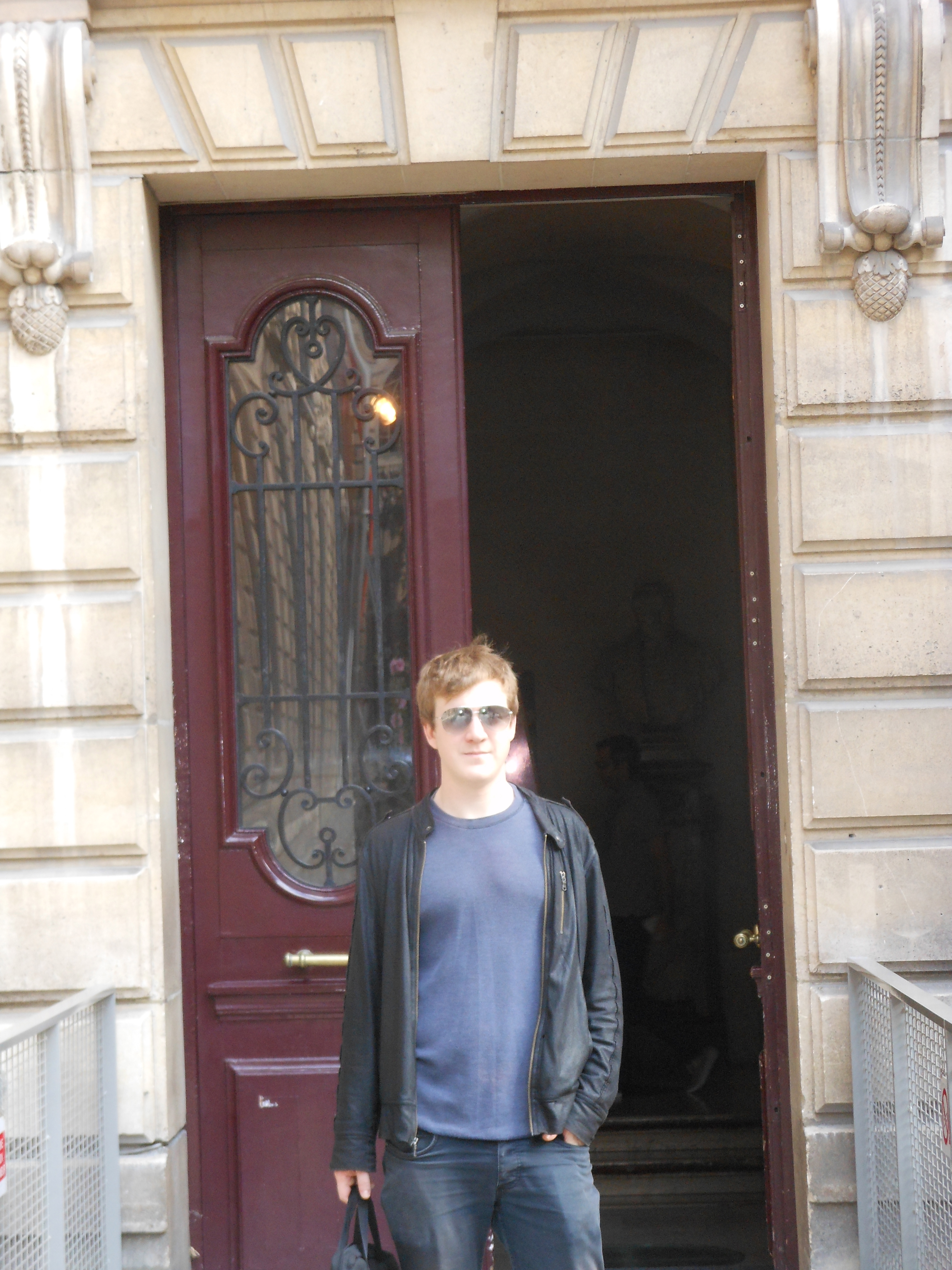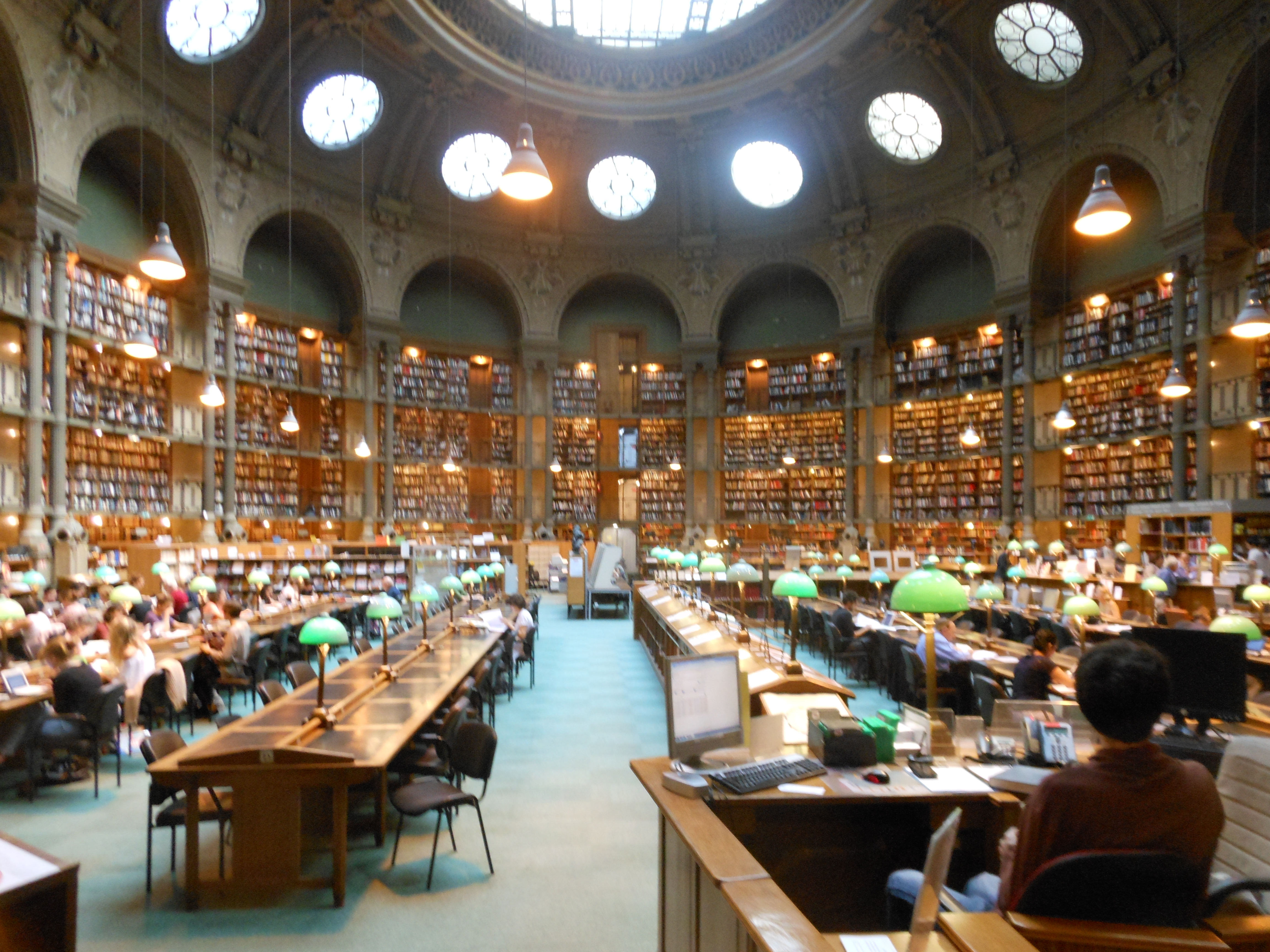Locating the Past, Chapter Two Language and Culture in BNF Manuscript 375

Lukas
As with my first blog post, I will first summarize my research at the national library, then say a few words about my home and social lives in Paris.
My research has progressed well since the last round of blog posts. Readers may recall that my preliminary goal as a President’s Summer Fellow was to identify the geographic origins of the second text in Ms. BNF 375, a medieval French version of the Apocalypse. I spent my first month in Paris doing just that. I first performed a dialectal analysis to determine the provenance of 375’s copy of Explication. In brief, the copyist wrote in picard, a Northern scripta, or written dialect. However, I also noticed that the text opens with a prologue, and that this prologue exhibits a number of linguistic traits inconsistent with Picard writing. Working under the assumption that the language of the prologue is also that of the original text, I was able to link Explication to a prominent 12th-century copyist, Gilbert de la Porrée, bishop of Poitiers from 1142-1154. In the end, then, I can make a pretty tenable connection between 375’s Apocalypse and the city of Poitiers.
Friends, family, and professors have asked me about the importance of 375’s Apocalypse. Why study a forgotten text written in Old French? To begin, why has Explication remained unstudied? It would appear that scholars of medieval theology and French literature have overlooked L’Explication de l’Apocalypse (the descriptive title that appears in the library’s catalogues numérisés) because it features no miniature artwork. That is, while nearly all other extant versions of the medieval French Apocalypse contain ~80 ornate hand-drawn panels depicting the 22-chapter episode known to us as the Book of Revelation, Explication is a strictly textual piece, save the colored initials that mark the divisions between biblical text and explanatory passages (“exegesis” or “gloss”, to scholars in the field). I would argue that the absence of miniatures makes Explication a fascinating text.
The text is a rich record of dialectal history, and thus a perfect candidate for my proposed philological method. I undertook to use linguistic traits and references to regionally specific religious practices to shed light on the making and circulation of Explication in medieval France. The language of the text led me to conclude that the manuscript was assembled in Picardie (possibly in Arras). The gloss of the text—in effect, a regionally specific interpretation of the Apocalypse—allowed me to link the original version of Explication to Poitiers.
In addition, this version of the Apocalypse is associated with the Latin version that opens the manuscript. One could argue, then, that 375 contains one of the earliest bilingual editions of the Apocalypse, an edition that appealed not only to clerics of the time, but also to a more plebian audience by virtue of its translation into Old French. Still more important, the scribes and decorators who assembled the manuscript saw in Explication a religious text of great philosophical significance. Indeed, Gilbert de la Porrée, author of the previously mentioned prologue, was a controversial religious figure in 12th-century France; municipal encyclopedias from Poitiers have records of two trials involving la Porrée, one in Reims and one in Paris and both directed by religious councils. In particular, la Porrée, equal parts philosopher and bishop, was accused of heresy for his writings in the vernacular and for his philosophical beliefs with respect to the individual and the universal.
For these reasons, I find Explication to be a document worthy of modern academic consideration. Accordingly, I have spent the month of July working on a modern edition of the text. More specifically, I have transcribed the entire text in a word document, and am now in the process of adding punctuation, accents, and verse and chapter numbers to the text. Medieval scribes often omitted these details for the sake of spatial efficiency; vellum was an expensive material in medieval France.
Now for a brief note on my home and social lives in Paris.
I have a beautiful apartment on the Place de Clichy in the ninth arrondissment about ten minutes on foot from Moulin Rouge. My roommate is a talented artist and a decidedly cold person. She has been on vacation in the South of France for two weeks now, which has made home life much more pleasant. Our 60m2 living room is an old dance and theatre studio full of mirrors and paintings, and a perfect venue for soirées among friends. This room opens onto a small open-air patio that separates my room—la petite maison—from the rest of the apartment.
As for my social life, I’ve had lots of fun exploring Paris with the various Reedies who have passed through over the past month. Most recently I visited the Luxembourg gardens with Maya Frodeman. I’ve also been spending time with both of last year’s French scholars, Lucie Lamouroux and Lucie Dromer. Lucie L. and I attended a memorable music festival last Saturday in a suburb of Paris.
I’ve included a picture of my primary workspace, the Salle Ovale at the BNF’s Richelieu-Louvois site, and another picture of me outside the entrance. The young man working the desk in the first shot informed me that it is forbidden to take pictures in the library. This may be the only visual record of what goes on in the BNF’s Salle Ovale. So enjoy!
Tags: psf, french, presidents summer fellowship, research, translation

